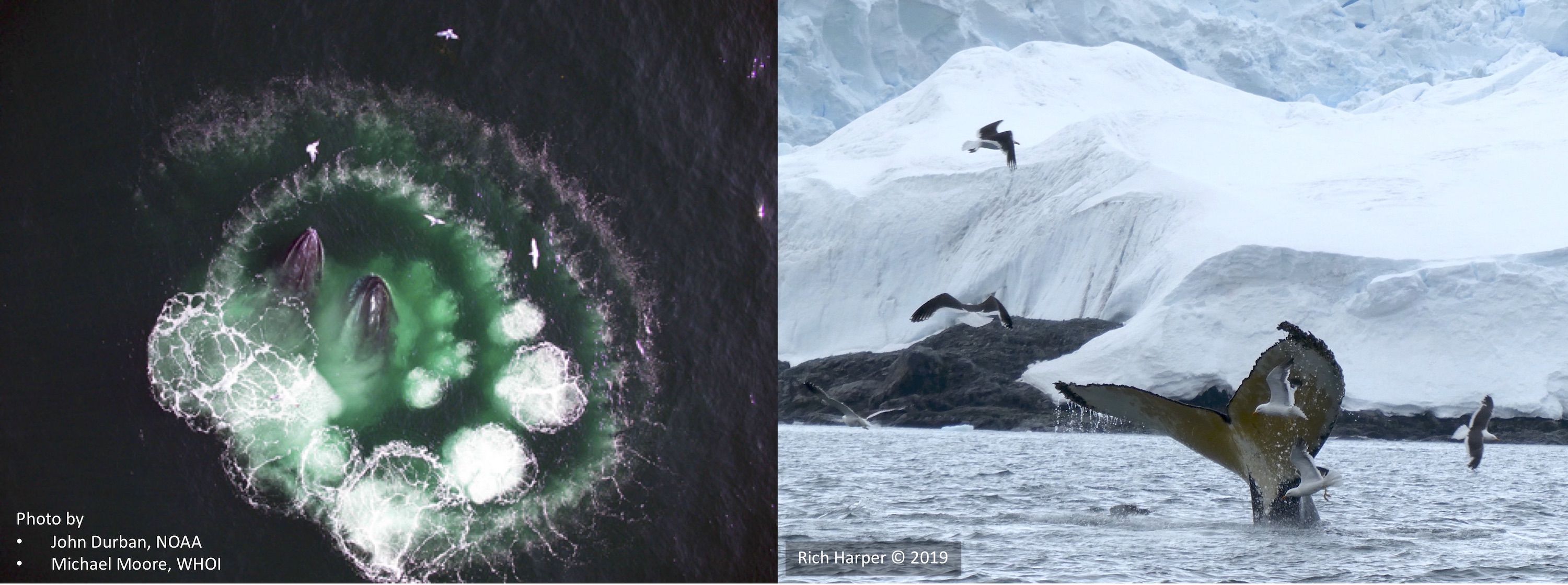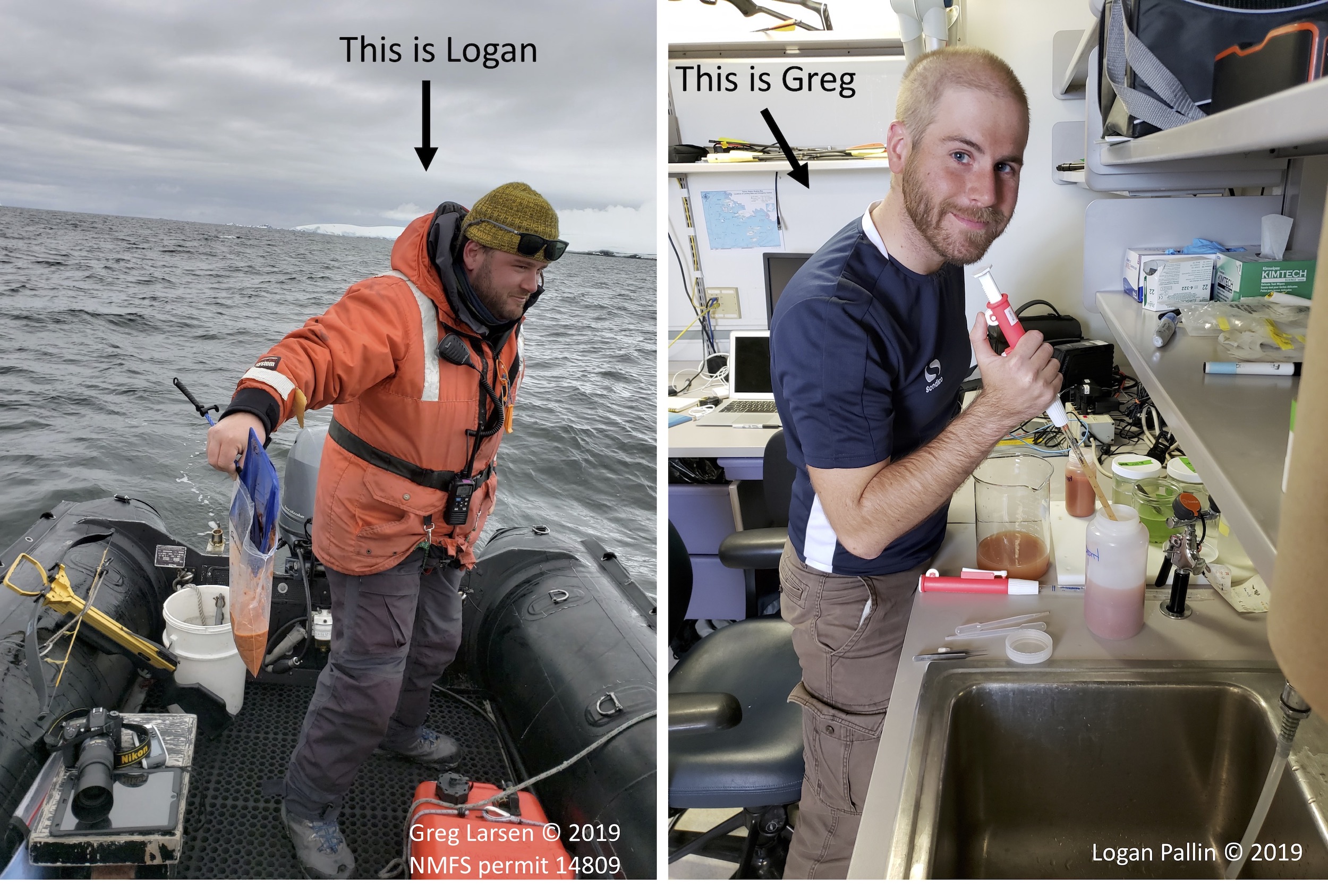Whales and krill (again!):
We know whales here eat a lot of krill. They sometimes catch the krill using a technique called bubble-net feeding. In essence they create a curtain of bubbles in circular fashion and they trap the krill inside it (left photo, obtained online).

They may work together to create the bubble net and provide plenty of food for other whales, depending also in part on the bubble net size and how much krill was caught.
What comes in must come out also. Scientists Logan and Greg were able to collect a fecal (fancy word for poo) sample from a whale recently. It appeared as a bright red-orange cloud in the water. Greg deftly scooped it up as Logan steered the zodiac. Greg is apparently more excited about the fecal sample than Logan (compare left and right photos below). The red-orange color is another indication that krill is an important food source for whales.

The more solid material that sank to the bottom of the nalgene bottle is what will be investigated further - for example, are there any fish bones such as otoliths? So, Greg is getting the sample ready by discarding the liquid above.
All in all we are learning more and more about whale ecology here at Palmer Station.

Thanks, Keri for the great photo of Logan and Greg searching for whales (above).